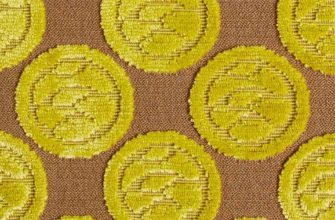Satin jacquard is a unique material that is widely used in the light industry. It is distinguished by its high quality and density (from 180 to 225 threads per 1 square centimeter). The composition of this type of fabric may include additional threads of polyester or other materials. How does jacquard differ from ordinary satin? What are the advantages? What is it used for? Answers to all questions can be found in this article.
Composition, properties, density of the material
The word "Satin" in translation from French means - atlas. However, the material received this name only for one feature - the reflection of sunlight. The fabric itself is presented as a large cotton cloth, but due to its high density, it can easily reflect light, which is reminiscent of silk material.

The material is created on a separate weaving machine. The density is up to 225 threads per 1 sq. cm, the composition may include cotton, polyester, synthetic fabrics. On the machine they are tightly intertwined with each other, creating an original convex pattern.
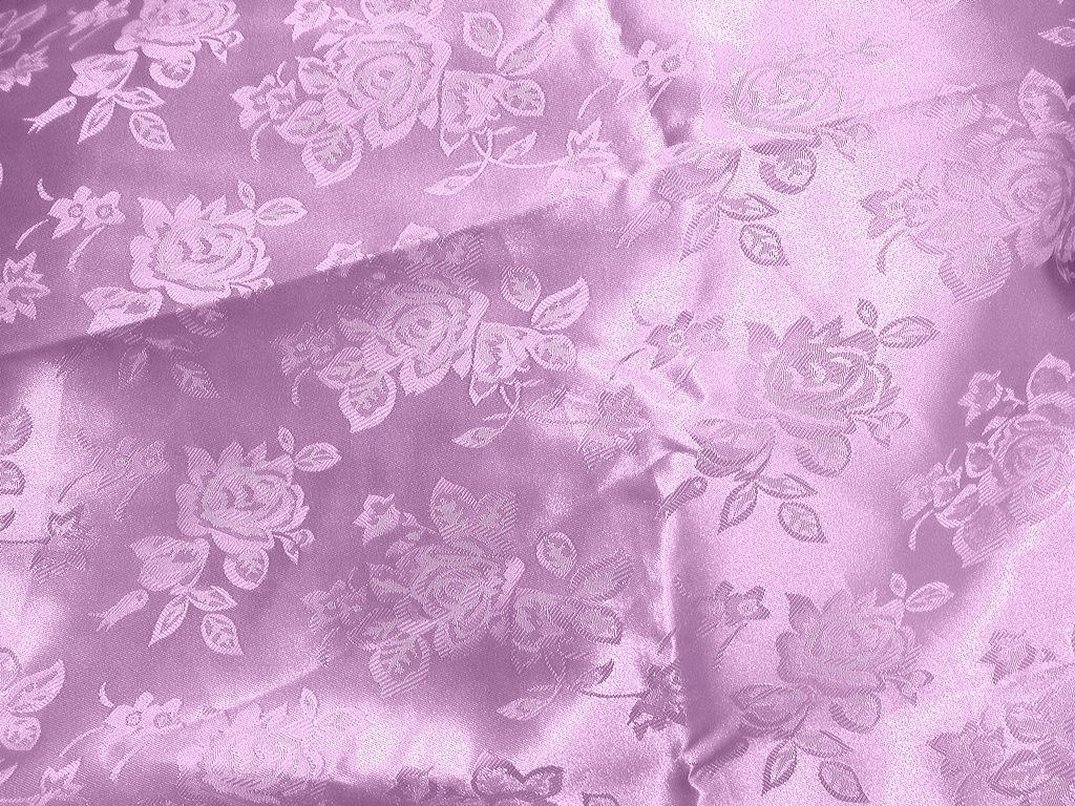
Important! The main feature is relief, beautiful heterogeneous patterns.
In order for the pattern to be clearly visible, it must be dyed. Manufacturers have invented two types of dyeing satin products. The first method is that the threads that will go into the weaving of the material are dyed before the fabric is created. The color is deep and saturated, since each thread has had time to absorb the paint. The second method is to create a pure white or gray pattern, and then soak the fabric in different solutions and dyes. Due to this, the expressiveness of the print is achieved, and the color becomes brighter.
Durable fabric is often used for furniture upholstery. It is not afraid of time or circumstances. It is highly wear-resistant, so even after 5-7 years it will not get dirty or wear out.
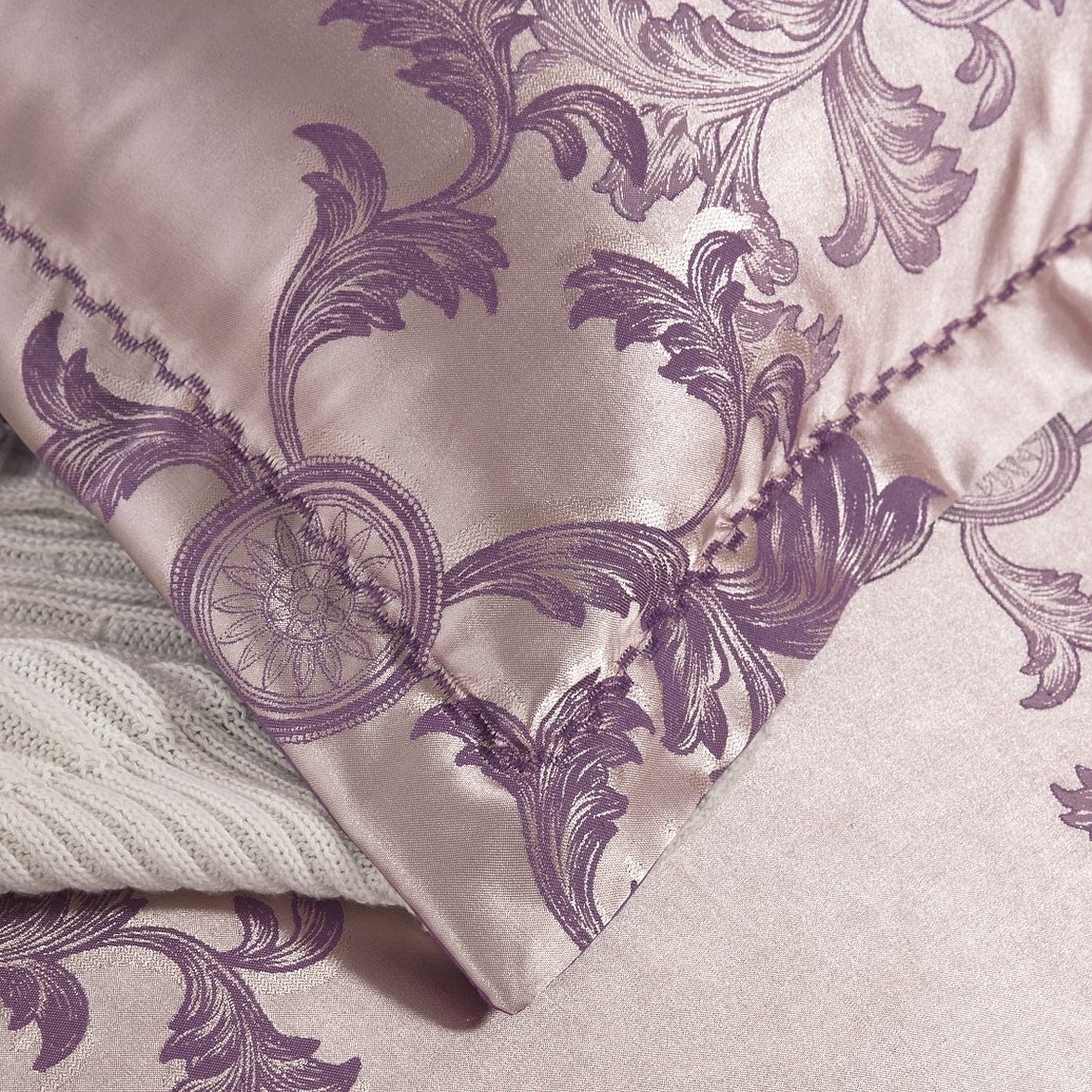
Other material properties:
- absorbs moisture well;
- breathable;
- retains heat;
- does not become electrified when in contact with animal fur or hair;
- the density reaches 225 threads per square centimeter - this satin is used for clothing or bed linen;
- density over 250 threads is characterized by high wear resistance when interacting with chemicals (harsh salts, powders, bleaches), used to create home textiles: curtains, decorative pillowcases, sheets).
Differences between satin jacquard and other types
The first distinctive feature is the appearance. Jacquard material has the same structure on both the front and back sides. Many buyers cannot immediately determine which side is which. But this is not a problem - the patterns and color are completely identical, and even if you lay the fabric with the back side up, hardly anyone will notice. In appearance, the decorative material can resemble medieval products. It is perfect for creating an exquisite interior.
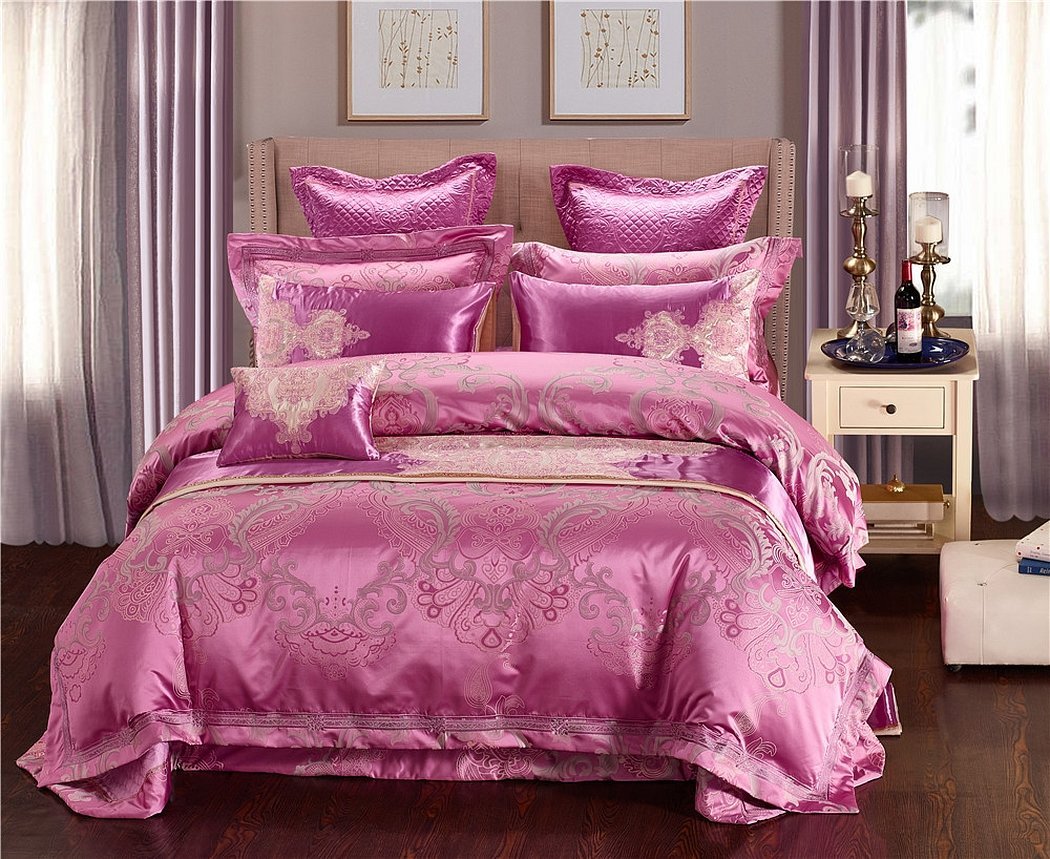
The second feature is high air permeability and durability. The product, even though made of natural fabrics, does not wrinkle or wear out.
Which is better: regular satin or jacquard
When comparing, you can see several clear advantages of jacquard:
- The sheets do not slide under body weight.
- No snags, holes or pellets are formed.
- No water or sweat stains.
- The color does not fade under the influence of sunlight.
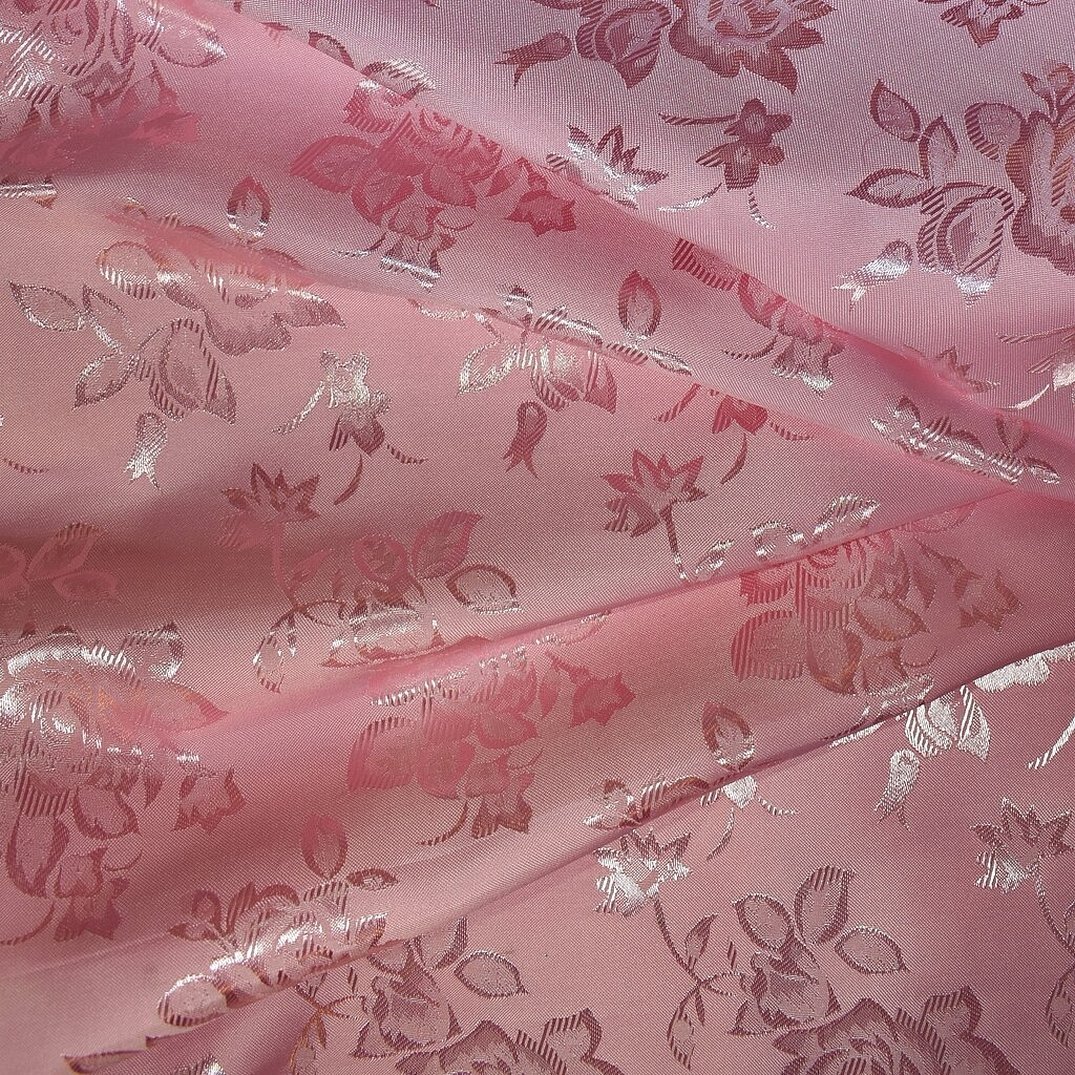
Recommendations for choosing
To choose the right high-quality material, you need to follow several recommendations below:
- This fabric is particularly durable. Therefore, when buying, you can safely check its wear resistance. You can try to tear it. But without fanaticism, since even the most durable fabric can tear under the influence of great force. If the fabric tears or begins to unravel with minimal effort, it is a fake. Real jacquard satin will not give in under minimal impact.
- Absorbs moisture well. You can also take a small piece of fabric and pour a few drops of water on it. A quality product will absorb it in a minute, and there will be no traces left in 2-3 minutes.
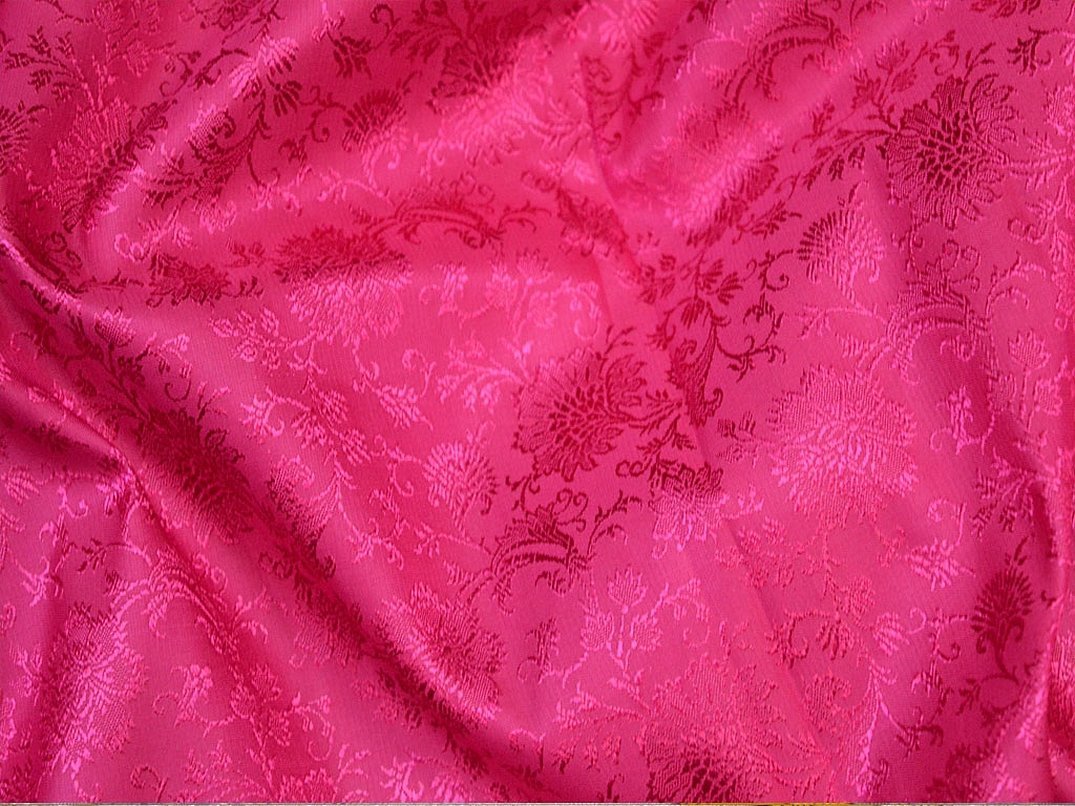
- You need to look carefully at the density of the product. If you see weakly woven threads or gaps that should not be there, it is a defect or a fake.
- You can determine the quality of satin with one movement of your hand. Jacquard is a lint-free fabric, pleasant and smooth to the touch. It is enough to run one hand over the surface of the material to understand its quality.
- The quality of the pattern must be at the highest level. It is necessary to carefully examine the print, there should be no protruding threads or pellets. Also, the threads should be well saturated with paint, the color should be saturated. The pattern must be made in the same style throughout the entire canvas.
Features of care
At first glance, this is a durable and long-lasting fabric. This is true if you adhere to gentle and delicate care. For those who do not want to bother with this, the material can be given to a dry cleaner, where they will do everything necessary to update the color, structure and density of the fabric. But if you do not want to spend extra money, home care will be no less effective. There are several rules that should be followed.
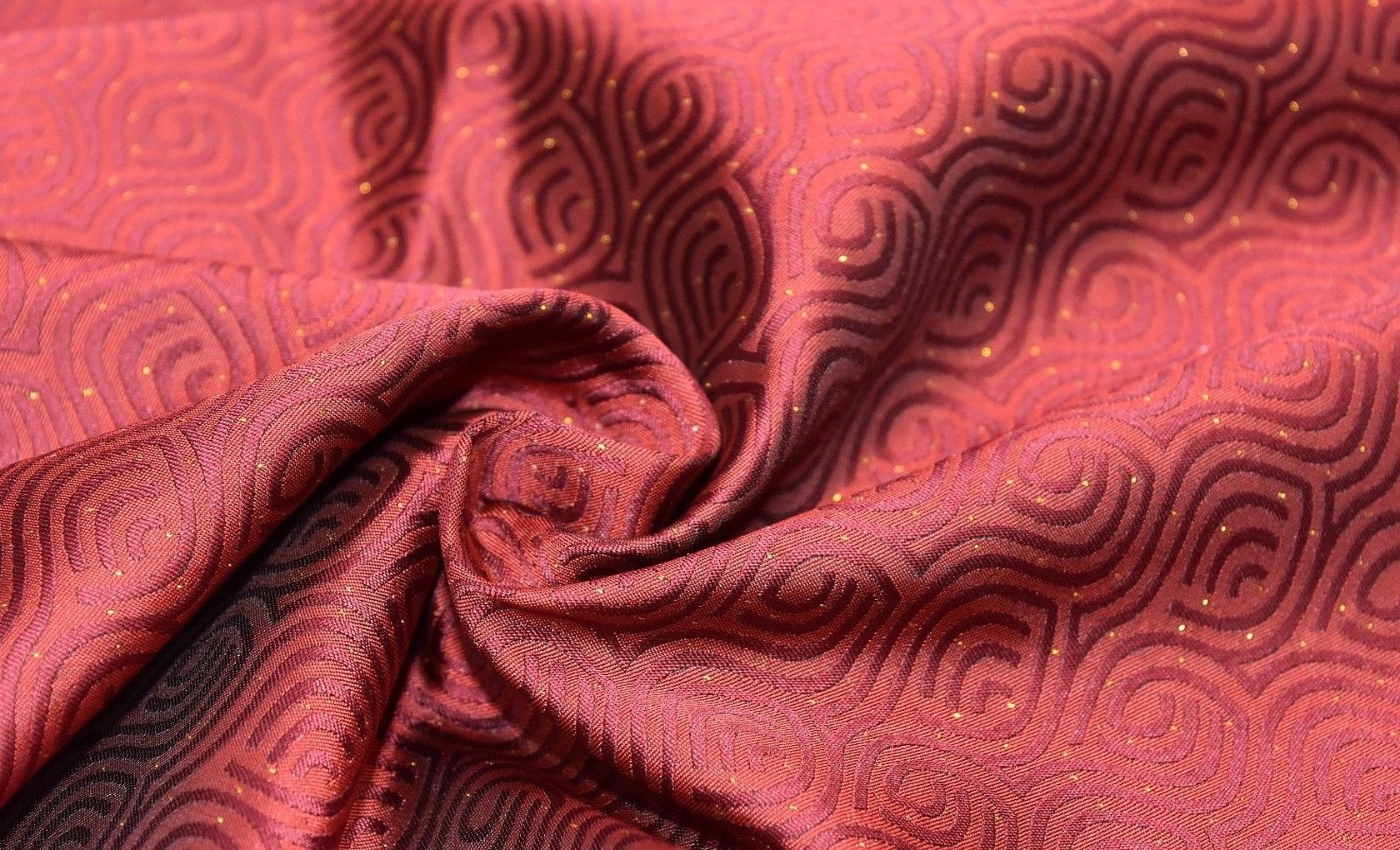
- When washing, use only cold water. It helps to maintain the elasticity and density of the fabric. Warm water destroys the fiber bonds, which leads to a loss of quality of the fabric.
Important! For 200 to 250 thread counts, you can use water up to 40 degrees when washing. This will be indicated on the manufacturer's label.
- Bleach and chlorine are enemies. Highly concentrated chemicals can wash away paint, thereby making the color dull or the canvas completely white. A great option for washing is shower gels or gentle liquid soap, without phosphates.
- Do not use brushes or sponges with a hard base or bristles. This will destroy the fiber structure, and the fabric will not be lint-free and smooth. If you need to remove a stain, do so with smooth, slow movements, using a soft sponge, previously soaked in a mild detergent.
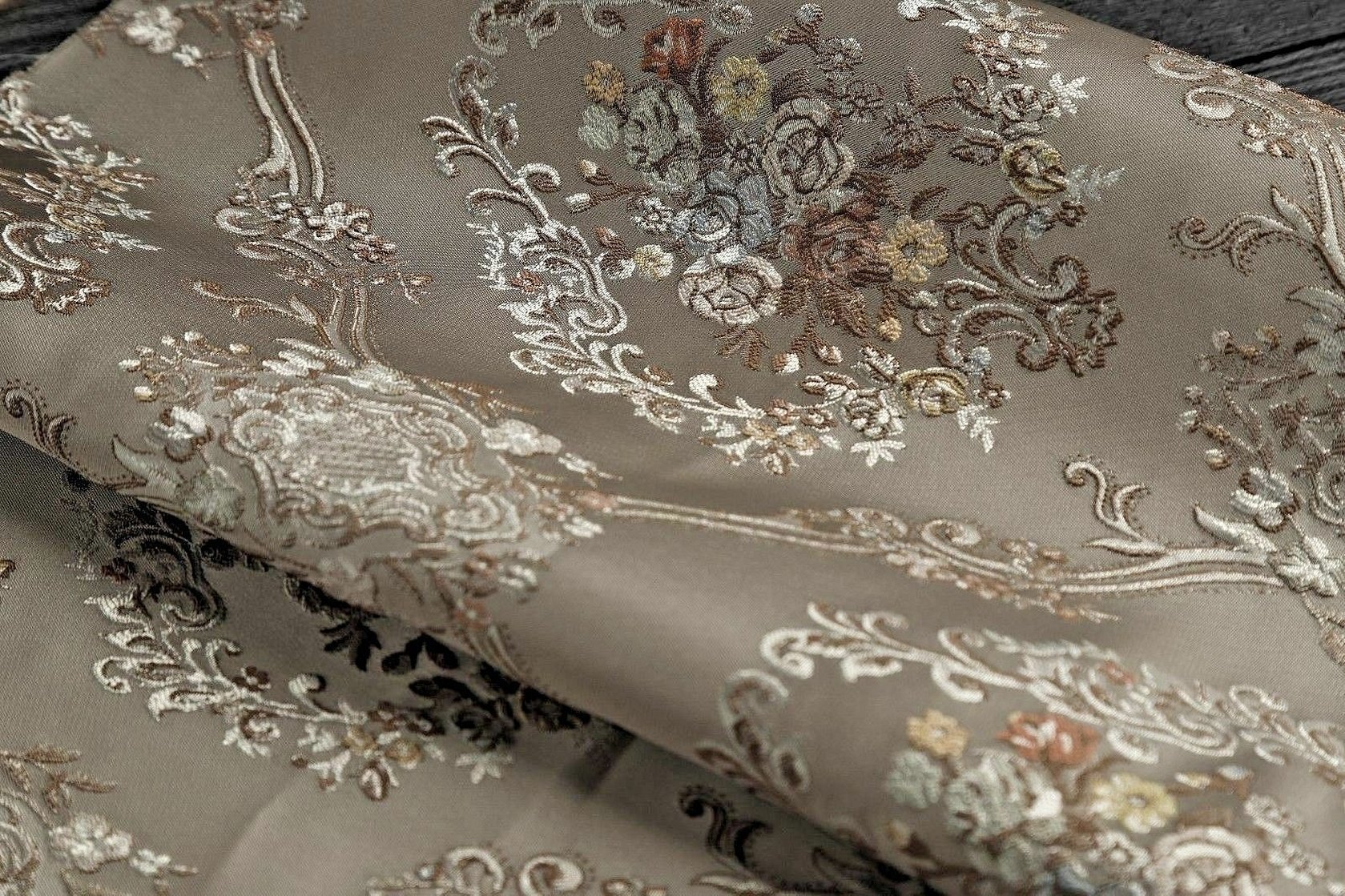
- Washed items must be wrung out exclusively by hand. This should be done smoothly and carefully.
- To dry the canvas, it must be hung in the fresh air, preferably in partial shade. This will protect the thread from fading and color loss.
- Iron on reverse side only.
Important! To avoid threads from bending and the fabric from losing its elasticity, before drying the fabric outside or on the balcony, it must be laid out on a flat surface and left for several hours. The threads will dry out and retain their original shape. Then you can hang it up.
Advantages and disadvantages
Each fabric has its own pros and cons, according to which it is selected for the creation of a particular product. Let's consider the advantages and disadvantages of jacquard.
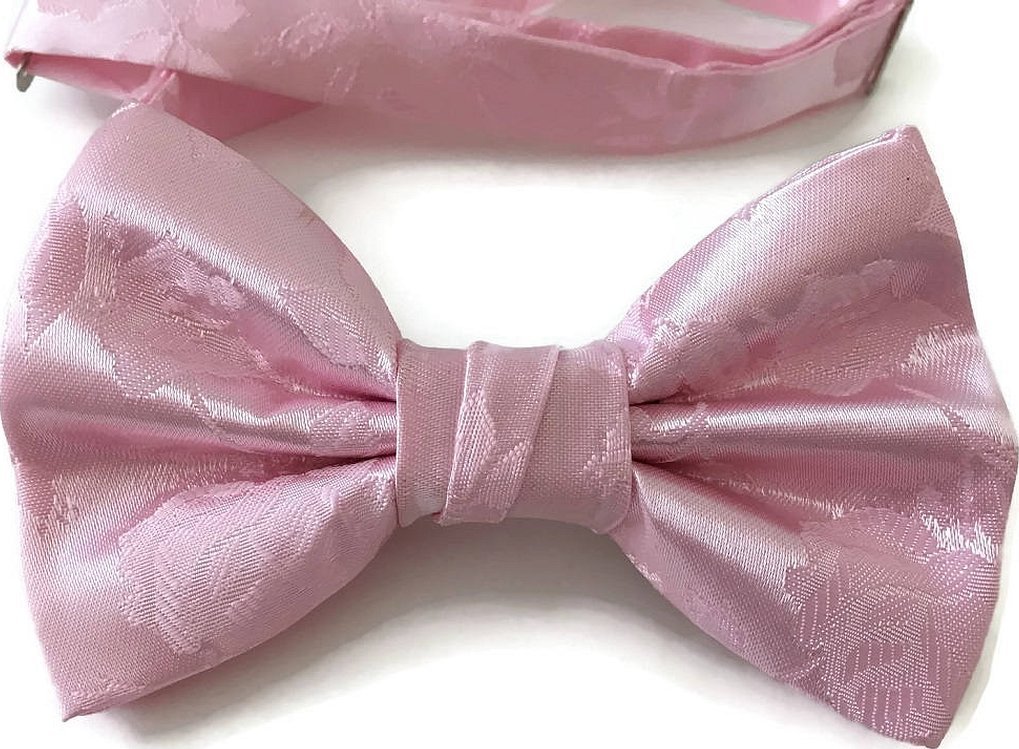
Pros:
- hypoallergenic fabric;
- pleasant to the touch;
- reflects light like silk;
- original patterns that add sophistication and style;
- high wear resistance;
- density;
- fast moisture absorption;
- resistance to high temperatures;
- The fabric practically does not wrinkle; to straighten it out, it is enough to shake it a couple of times.
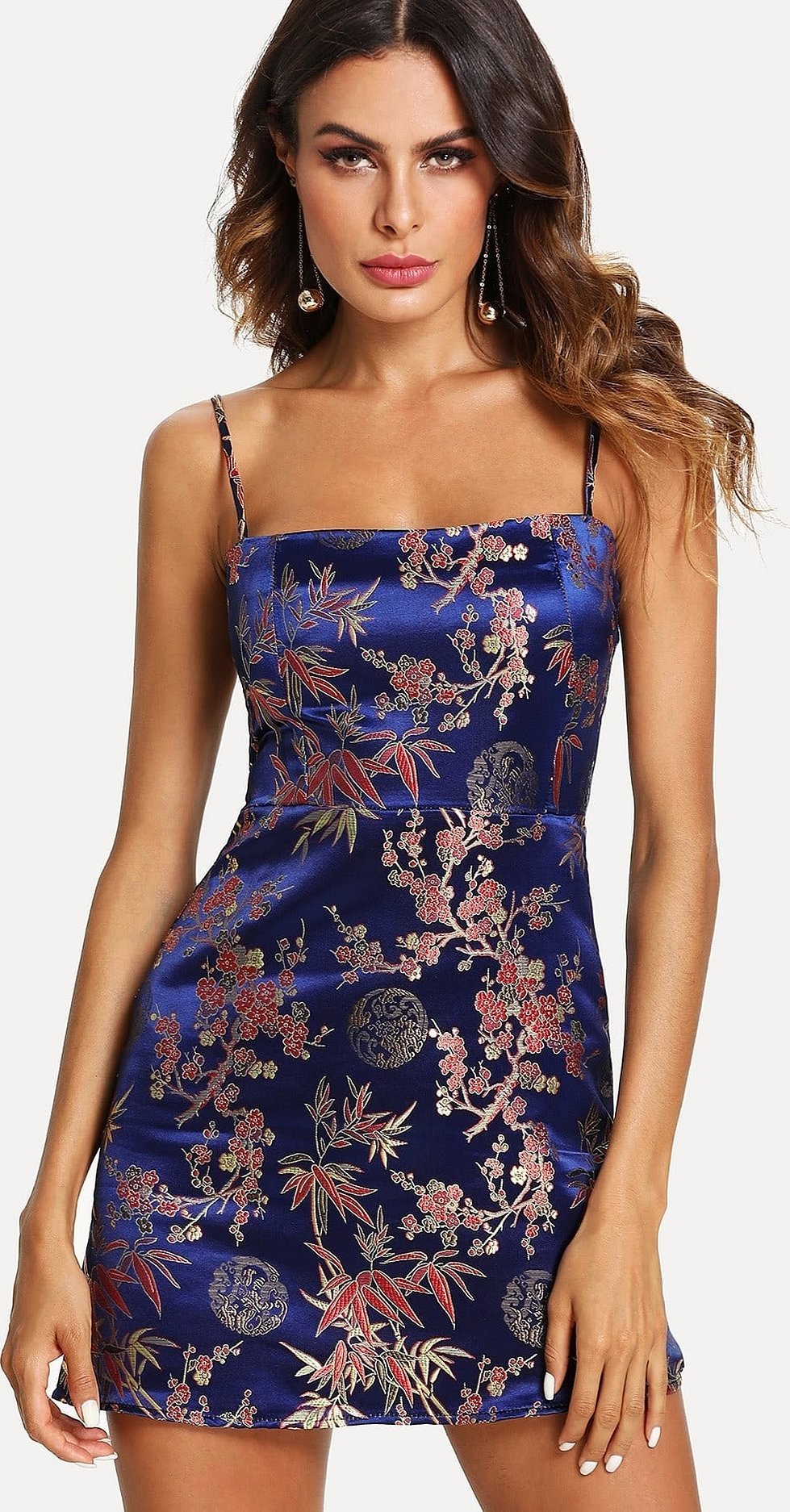
Cons:
- bed linen is not intended for the summer season;
- requires careful care.
Reviews
To be completely sure that this is a really good and high-quality material, it is suggested to consider reviews of bed linen made of satin jacquard:

Alina, 42: “I was given this set of bed linen as a gift several years ago. At first, I didn’t pay any attention to it and just threw it in the closet, thinking that my friends had given me a cheap thing. But a year later, I decided to take it out and take a closer look. I really liked the appearance of the jacquard, so I decided to check it out. It was a cold winter then, and regular bed linen didn’t keep me warm, I had to turn on the convectors on full blast, which was expensive. After several nights under this blanket, I was pleasantly shocked – much warmer, no need to spend money on electricity. The fabric is pleasant to the touch, high quality, beautiful pattern. In general, only pluses. I thanked my friends later!”

Oksana, 20: “I read a lot of articles on the Internet about how great satin is, and decided to buy it (fortunately, my financial situation allows it). And what can I say – it’s a really high-quality material that’s worth the money. Yes, you have to bother with caring for it, but I personally don’t risk doing it myself – I take it to the dry cleaners once a month. But overall, everything is fine. Now almost my entire apartment is in satin – I like the aesthetic beauty of the patterns and the richness of the colors.”

Alexander, 33: “What can I say… This is a pretty good option for your home or apartment, but it’s just a lot of hassle. I decided to make peace with my wife – to please her with new beautiful bed linen. I was advised to choose jacquard. First, I looked at it on the Internet, and then, taking into account all the recommendations for choosing, I went shopping. I’ll be honest, finding really high-quality satin is very difficult. A person who doesn’t understand this can easily buy a defective product or a fake. Therefore, first read 4-5 articles on this topic and only then go choose.”
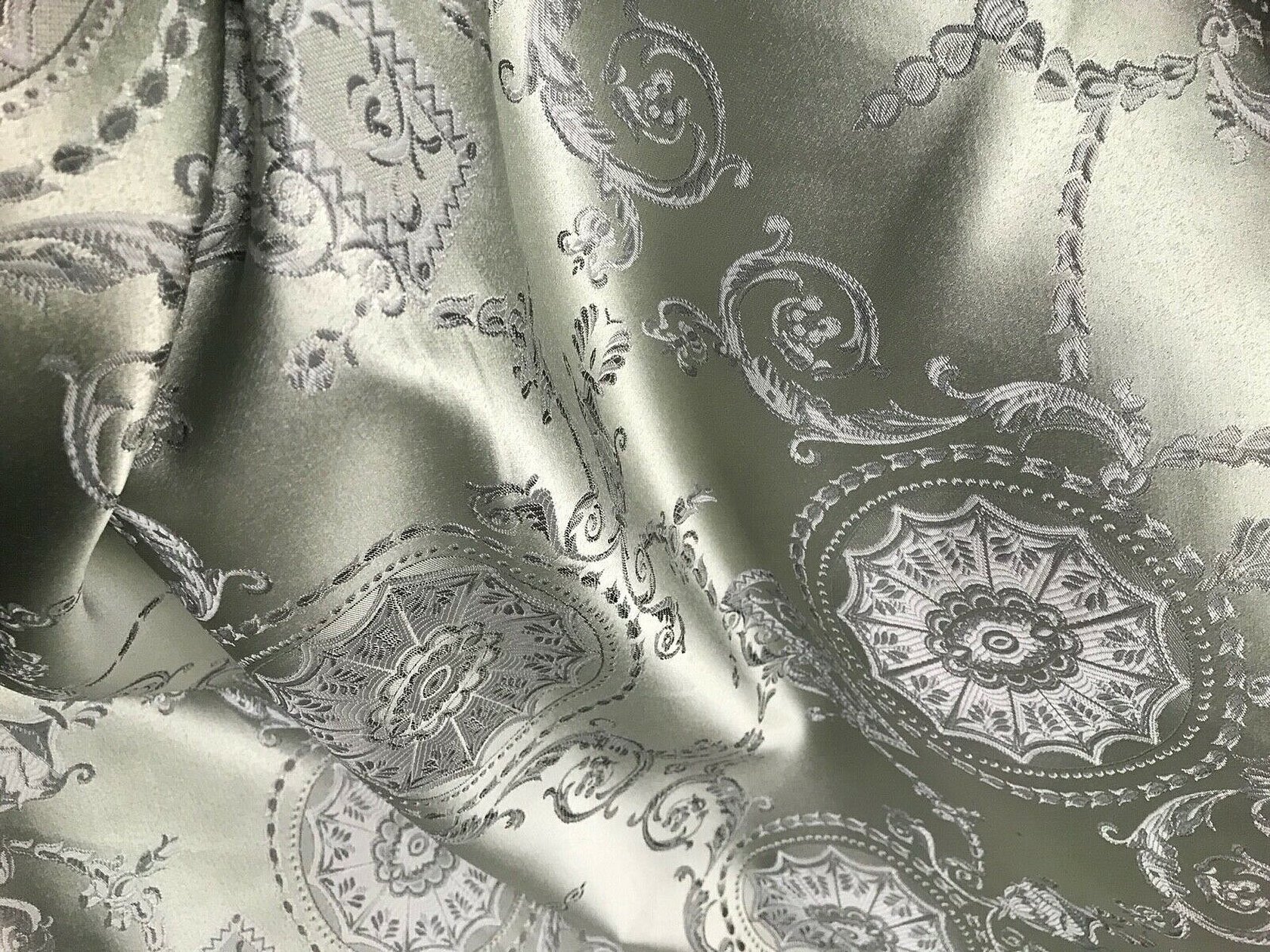
Jacquard is an elite class material that not everyone can afford. But it is definitely a good option for your money. Considering the huge number of advantages and several disadvantages, including delicate care, we can conclude about the uniqueness and high quality of the fabric. For those who decided to make an expensive and durable purchase for their home, this will be an excellent option.



